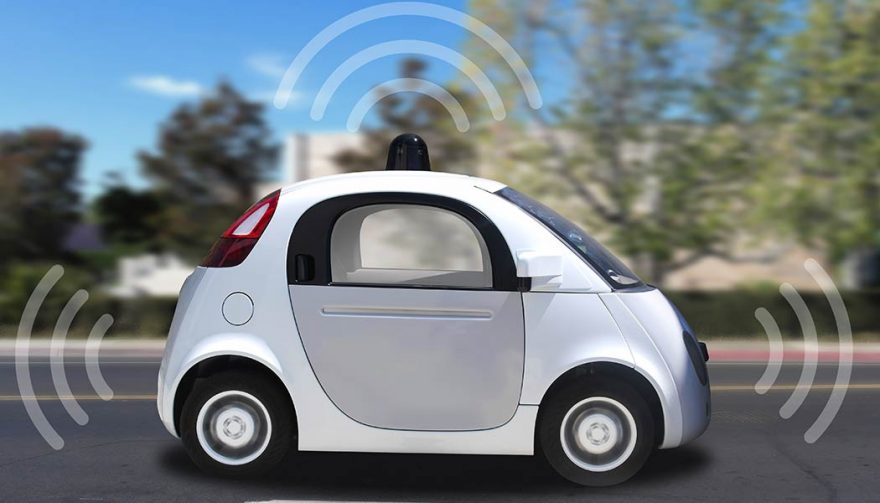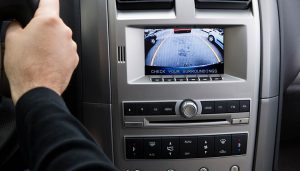
Autonomous cars are undoubtedly going to make an appearance on the streets worldwide.
Are Autonomous Cars Going to Take Over?
The scene is set like a Hollywood film. In a science fiction world where the extras all wear clothing that look like Halloween costumes and hairstyles are wilder than the 80’s, cars that drive themselves fit in as outlandish and futuristic.
It doesn’t seem like anyone ever really expected technology to advance this far so fast. When adaptive cruise control and lane keeping assist systems were introduced just a few short years ago, the joke was that the next step would be cars that drove themselves. Even the adaptive cruise control systems were received halfheartedly by pessimistic automotive industry professionals that only foresaw problems with technological failures and repetitive service visits.
Yet, here they come.
Get Ready for Autonomous Cars
Autonomous cars are undoubtedly going to make an appearance on the streets worldwide. Every major manufacturer is feverishly trying to be the first to release their version of a self-driving car, just like Lexus was the first to produce an actual hoverboard. Makers like Ford, Toyota, even the technology giant Google, are attempting to master the art of autonomy.
First, what is an autonomous car?
Some refer to them as self-driving or driverless vehicles, though that is a broad stroke. There are five levels of autonomy currently used. Level 0 is straight driver-centric controls without any input or assistance from technology. Here you see basic vehicles that pre-date electronic stability control. Level 5 is full-on autonomy without any option of driver input. In fact, at level 5 there isn’t even a steering wheel in the car.
Another point of reference is Tesla’s autopilot feature that was uploaded to its Model S customer base in October 2015. This ‘autopilot’ setting allows the driver to employ a combination of lane keeping assist and adaptive cruise control, essentially maintaining hands-free operation. Though this is a milestone for sure, it’s still only level 2 on the autonomous scale.
Ford has kept relatively tight-lipped until recently about the driverless car developments. Assuming they were getting their ducks (and engineers) in a row, the top dogs at Ford reserved their announcements until they were confident they could release autonomous technology to the public within five years. That means by 2020, we could see an influx of driverless vehicles on the roads.
Ford went straight for level 4 autonomy with their cars under development. Level four employs full autonomy with an option for driver input if a driving experience is desired. That means their cars will have a steering wheel that can take over from the automated system should the need arise.
Google, on the other hand, has opted to go for the jugular. Their focus has been on complete autonomy. Their cars are undergoing testing already in Texas and California, both in Lexus SUVs modified so they don’t require a driver and in small cars designed from the ground up as self-driving. They don’t even have a steering wheel.
Toyota also is in the real-world testing phase. They’ve begun testing their vehicles on the highways in Tokyo, though only on the highway. The Lexus GS450h they’ve used for their test model cruises comfortably down the road, maintaining control using six lasers, five milliwave radars, and a camera. They read all input from around the Lexus from vehicles nearby – including their size – and their proximity, and the lane markings. Think of it like a bat’s echolocation.
Problems With Autonomous Cars
There are real-world problems yet to overcome before autonomous cars become mainstream. Regulatory bodies will need to determine how the self-driving vehicles make safety decisions including:
- when a pedestrian is in the path,
- when to transfer control back to the driver,
- and how the vehicles will react to something as unpredictable as weather conditions.
Consider for a moment that you are in the backseat of your driverless car. You’re cruising at 50 miles per hour on a busy multi-lane when a pedestrian steps off the curb. What does your car do? Does it swerve and hit another car? Does it hit the pedestrian to protect your safety? Does it slam on the brakes and cause a pile-up? What if you have five pedestrians and a single occupant in the car? Who does the system give safety priority to?
It is unimaginable that an automated system like those used in driverless cars is able to make the correct decision in every single instance. So when does the car transfer control of the car back to the driver? Can the car use an artificial intelligence to make humanitarian decisions? Who is held responsible if the driver is not capable of making their own input whether due to physical limitations or mental capacity such as inebriation?
For the autonomous car industry, there is another challenge that needs to be addressed – climate. For areas of the world that experience heavy rainfall, snowfall, and even desert areas with swirling sand, Self-driving cars aren’t able to determine the lane markings visually. What happens when there is a sudden snowstorm and your vehicle can’t see the road anymore? Will it stop on the road or worse yet, go off the road altogether? Or will it transfer input back to the driver? Unless there is another guidance system in place, level 4 autonomy is as far as automakers can go. The driver would need to provide input so a steering wheel is a must.
Guidance is reportedly coming by way of maps as well with Google providing their own and other makers using services such as TomTom and Magellan for their roadmaps. Those maps need to be extremely detailed – without flaw, really. Every lane exit needs to be accurately marked, every newly constructed or modified road or construction zone needs to be identified.
How exactly will automated cars be updated with these maps as well? Wireless transmissions to the cars are possible much like Tesla’s October 2015 autopilot update though not every vehicle will have a wireless connection in every instance.
Autonomous cars are definitely coming. Billions of dollars are being invested in producing working technology. Five years may seem like a lofty goal although testing is underway for Google, Toyota, Ford, and others. Will driverless cars take over? Due to geographic and climate limitations, it’s highly doubtful that autonomous cars will completely replace our current modes of transportation. It’s just not possible to provide universal usage worldwide.





